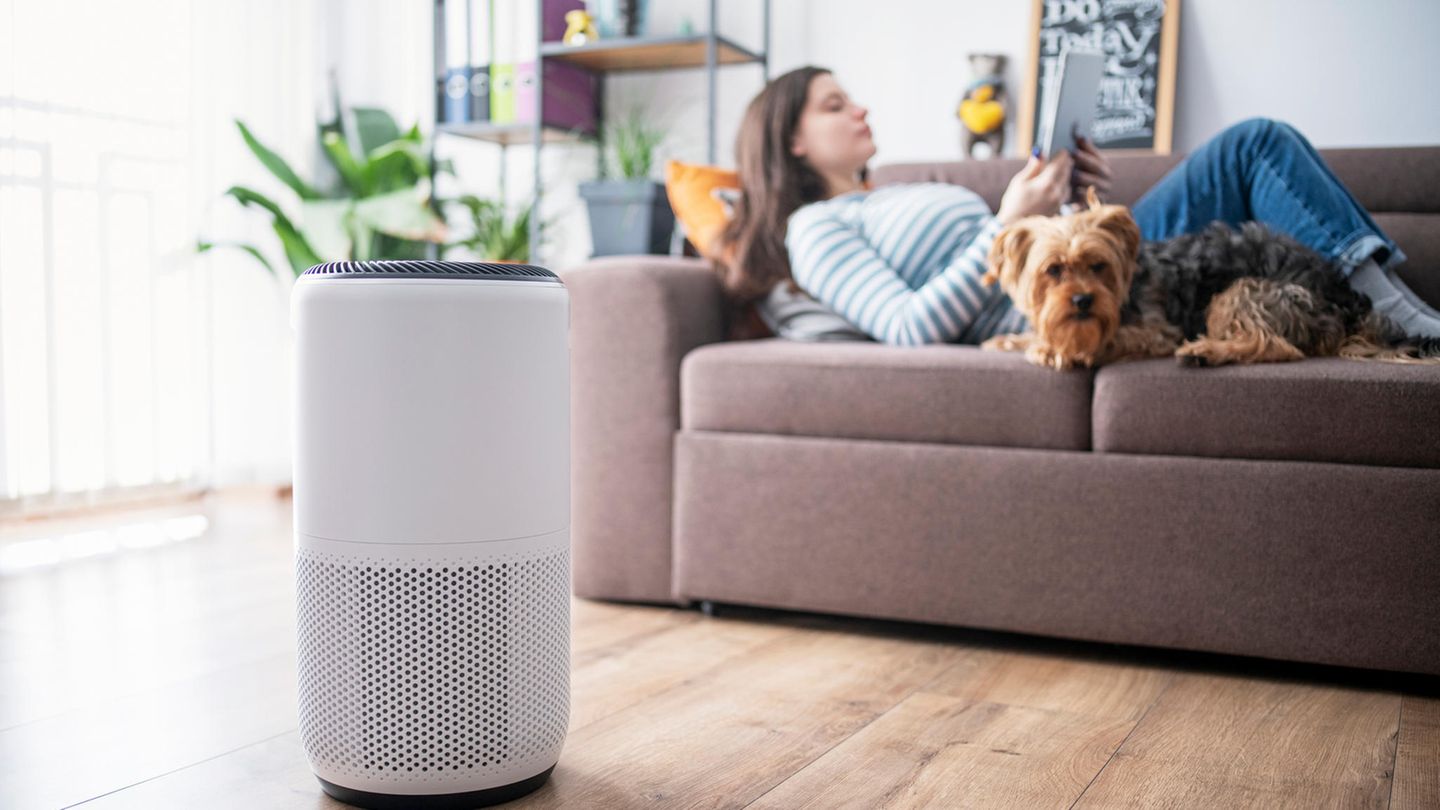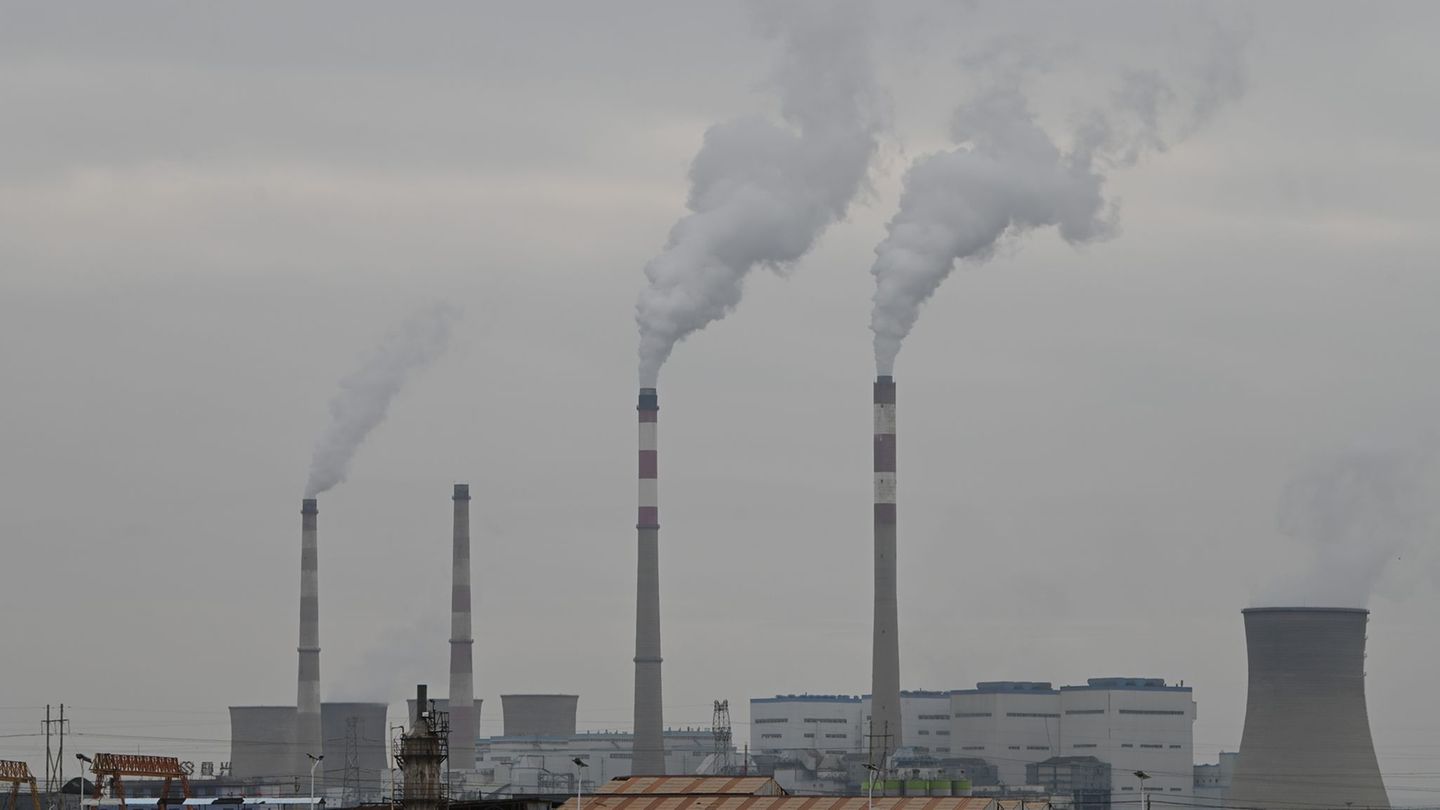Hay fever and house dust allergy
What allergy sufferers should pay attention to when buying air purifiers
Copy the current link
Add to the memorial list
With air purifiers, hay fever plagues can turn their four walls into an almost pollen-free zone. However, not every cleaner is suitable for fighting pollen.
Hay fever sounds harmless, but can be hell for those affected. The slight cases only have to sneeze, the heavy fights with itchy eyes, constant mucus secretion, inflammation of the sinuses and the conjunctiva up to the asthma. This torture continues for many affected people in the year, because the climate change has a lot of things earlier and sometimes far into late summer.
Some grass and pollen allergy sufferers are likely to relieve the home office in the flower season. You no longer have to get out, but ventilate in the morning and then close the windows. This helps a lot, but the tiny pollen still gets into the house. They hatch through the smallest cracks in windows and doors, are blown in when ventilating, carrying in with clothes. When walking through the apartment and temperature differences, the particles are then whirled up. Some pests are always there anyway, like the house dust mite. Anyone who suffers from a pollen allergy often reacts allergically to house dust. The symptoms are usually much lower than with flower pollen, but the combination of both allergy types means an immune system under a permanent fire.
Hepa is a must for allergy sufferers
In addition to tablets, drops and creams, at least in your own four walls you can also technically act against allergic reactions: with an air purifier. While these devices were more niche products two years ago, the Corona pandemic ensured a proper thrust on new devices in all price ranges and equipment variants.
The basic principle of the cleaners is simple: air is sucked in, led by several filters on which particles get stuck and cleaned again to the room. The cleaners don’t have to run continuously. Depending on the space volume and performance of the fan, only a few minutes an hour. Rule of thumb: The cleaner should be able to filter approximately twice the actual volume of space per hour. Some manufacturers indicate the cleaning performance in square meters. Here it should be taken more to look at the ceiling height of the manufacturer.
15 answers to important questions about hay fever
Who gets hay fever?
There is indications that the predisposition to hay fever is at least partially inherited. It is particularly common for people whose parents or siblings also suffer from allergies. Many researchers also believe that excessive hygiene makes the body susceptible to allergies such as hay fever. The underemployed immune system, actually responsible for the defense against diseases, is crazy as soon as it comes into contact with foreign bodies. On the other hand, if you were allowed to play as a child in the dirt and often came into contact with bacteria, your immune system is apparently hardened and can classify the pollen attacks as harmless. According to the “German Allergy and Asthmia” (DAAB), around 16 percent of the population suffer from a pollen allergy- with 80 million inhabitants, almost 13 million people suffer.
© Getty Images
More
Open the image subtitle
Back
Further
Pay attention to the follow -up costs when the air purifier
For allergy sufferers, only devices with a so-called HEPA filter are eligible. HEPA stands for “High Efficiency Particulate Absorbing”. The filter level in front is called EPA. The HEPA filters can filter particles smaller than a micrometer from the air. Pollen with a size of a minimal five micrometers get reliable in the membranes, but also mite eggs and even bacteria, mold spores and viruses. HEPA filters can be expensive depending on the manufacturer and device. If you adhere to the exchange intervals recommended by the manufacturer, you invest up to 200 euros per year in filtered air. A look at the follow -up costs is just as important when choosing the air purifier as at the purchase price.
So that the expensive HEPA filter does not quickly get there, it is behind a pre-filter. A membrane for rough, hair, dust, lint, insects blocks. Prefilter is usually not replaced, but now and then cleaned or rinsed with the vacuum cleaner.
In many models there is still an activated carbon filter between the pre -filter and the HEPA, as also used in extractor hoods. Your task is to filter smells. From a microscopic, coal is very porous, the air flows through it through a large labyrinth. In the long ways, odor items get stuck and are stored in the coal structure. At some point the coal can no longer accommodate particles and the filter has to be replaced.
Double -edged ions
However, the ionizer is indestructible. This component in the air purifier charges the air particles electrostatically using UV light. Particles are stored in the air on the negatively charged particles, form larger clusters that drop to the ground and are much easier to filter out of the air. The air looks fresher. The idea was copied to nature. In the wild, ions occur in much higher concentrations than indoors. Among other things, they are the reason that we have air as clear from the outside and perceive the room air as consumed.
Auxiliary product is ozone, a gas with double -edged properties. Ozone consists of three oxygen atoms and is very reactive. So it can split and neutralize odor molecules, even if they have already deposited themselves in textiles. In higher doses, however, Ozon looks harmful to health. The limit values defined by the EU are 180 micrograms of ozone per cubic meter. Sensitive people, and these are usually allergy sufferers, react from 40 micrograms to the gas smelling of chlorine. Even if the air purifier stays significantly below these values, the German allergy and asthmabund daab advises against ionisators. Benefits and the risk of discomfort are in a ratio.+
Leistretter preferred
Air cleaners suck the air with a fan and blow the clean air out on the other side. What is going on makes noises. During the day, the quiet whirring may go down in the soundscape of everyday life, but in the bedroom the cleaner should not be louder than 30 decibels in front of him. Many devices offer a night mode with a reduced speed and downturned lighting of the control buttons. The better devices can be controlled via the app. The small programs for the smartphone then also show upcoming filter changes.
Some air purifiers can not only filter the air, but also moisten. For allergy sufferers with irritated airways, damp air initially sounds tempting, but doctors still warn of the air washers. As soon as bacteria and fungal spores accumulate in the water tank, they are released into the room air. In sometimes large quantities, as studies have shown. Possible allergic reactions on mushroom spores are sneezing, runny nose, coughing, fatigue, joint or headache, gastrointestinal complaints or allergic asthma. Therefore: If in doubt as an allergy sufferer, you prefer to forego humidifiers.
*This article contains so-called affiliate links to products in online shops. If a user clicks on it and buys something, the publisher receives a commission from the dealer, not from the manufacturer. Of course, where and when you buy a product is up to you.
Source: Stern
I’m Caroline, a journalist and author for 24 Hours Worlds. I specialize in health-related news and stories, bringing real-world impact to readers across the globe. With my experience in journalism and writing in both print and online formats, I strive to provide reliable information that resonates with audiences from all walks of life.




